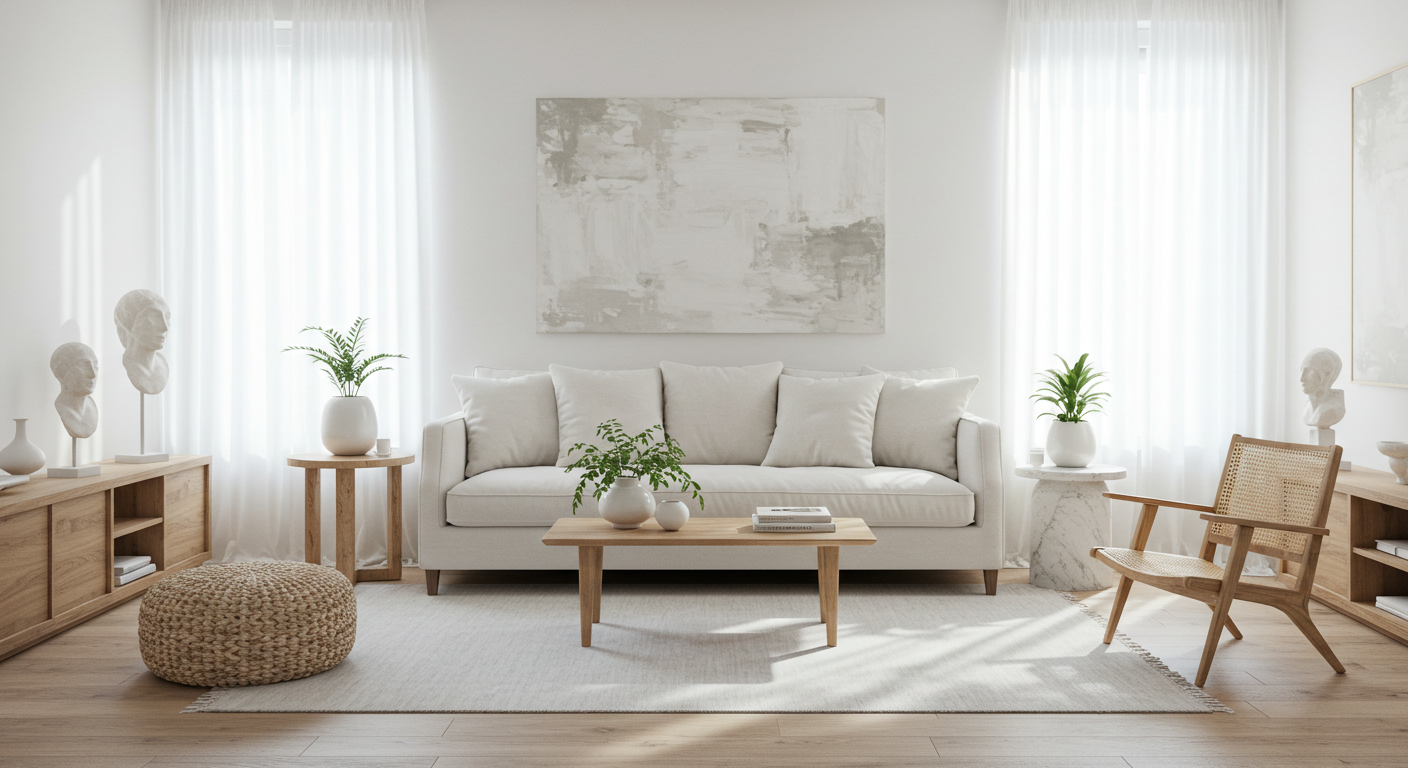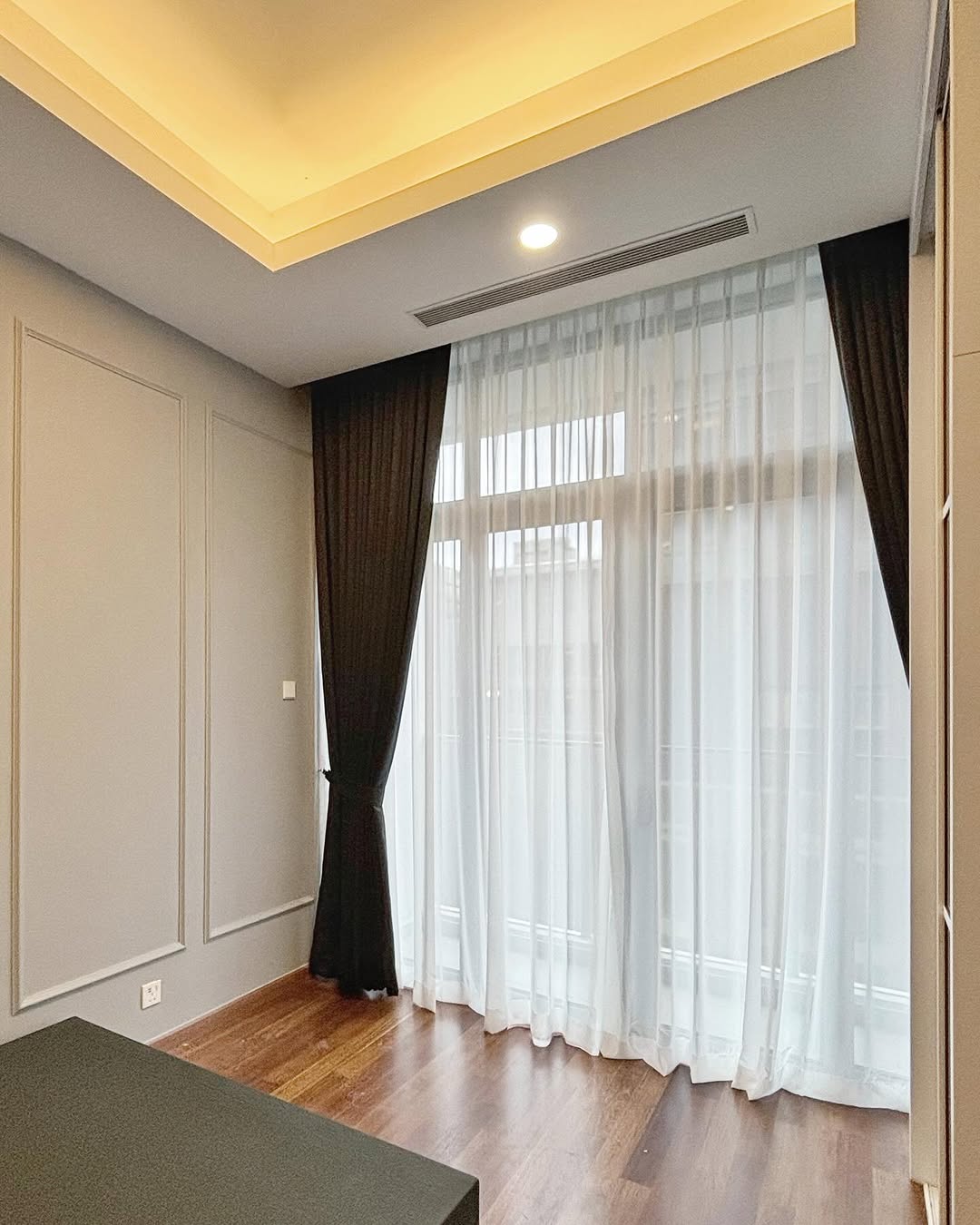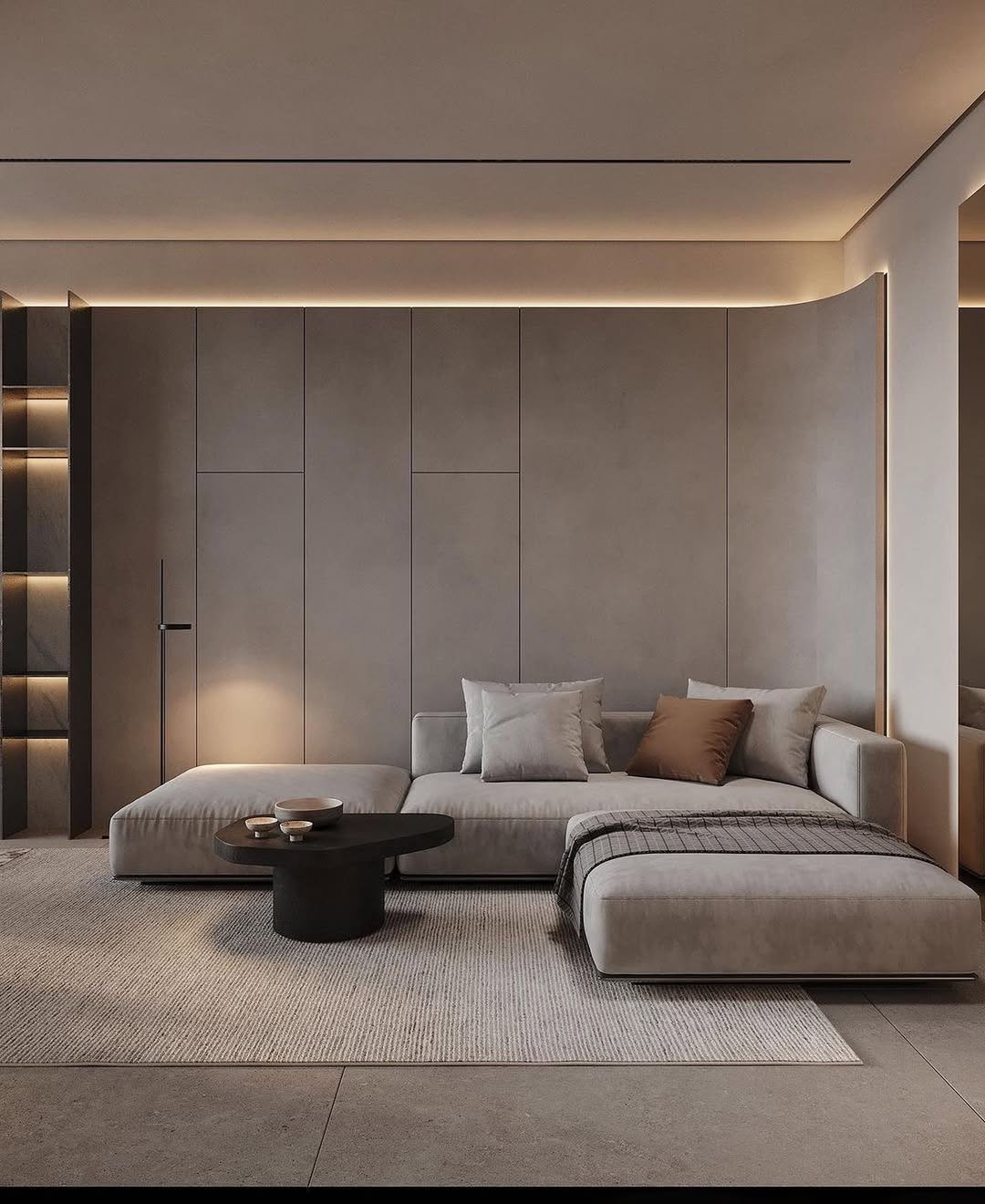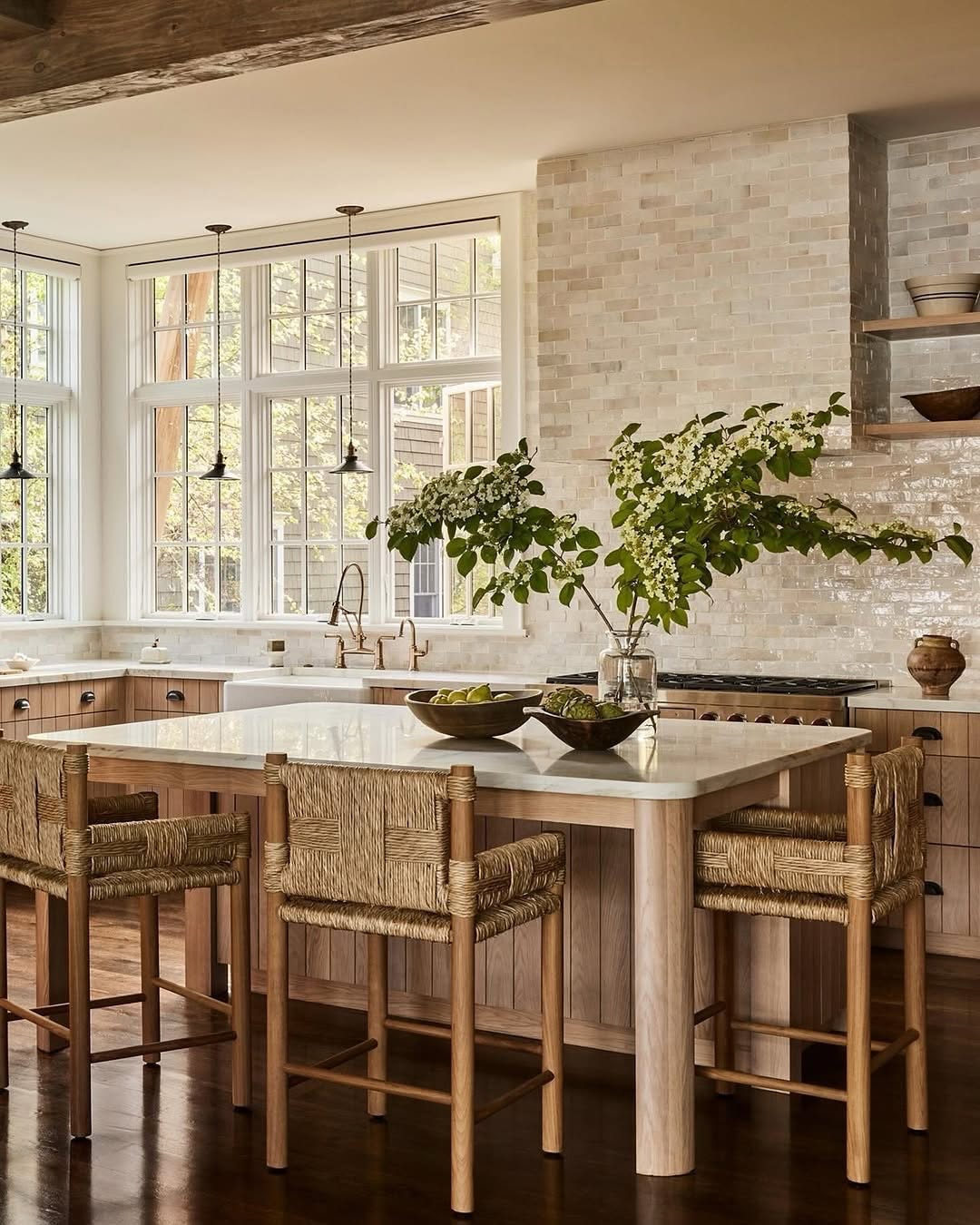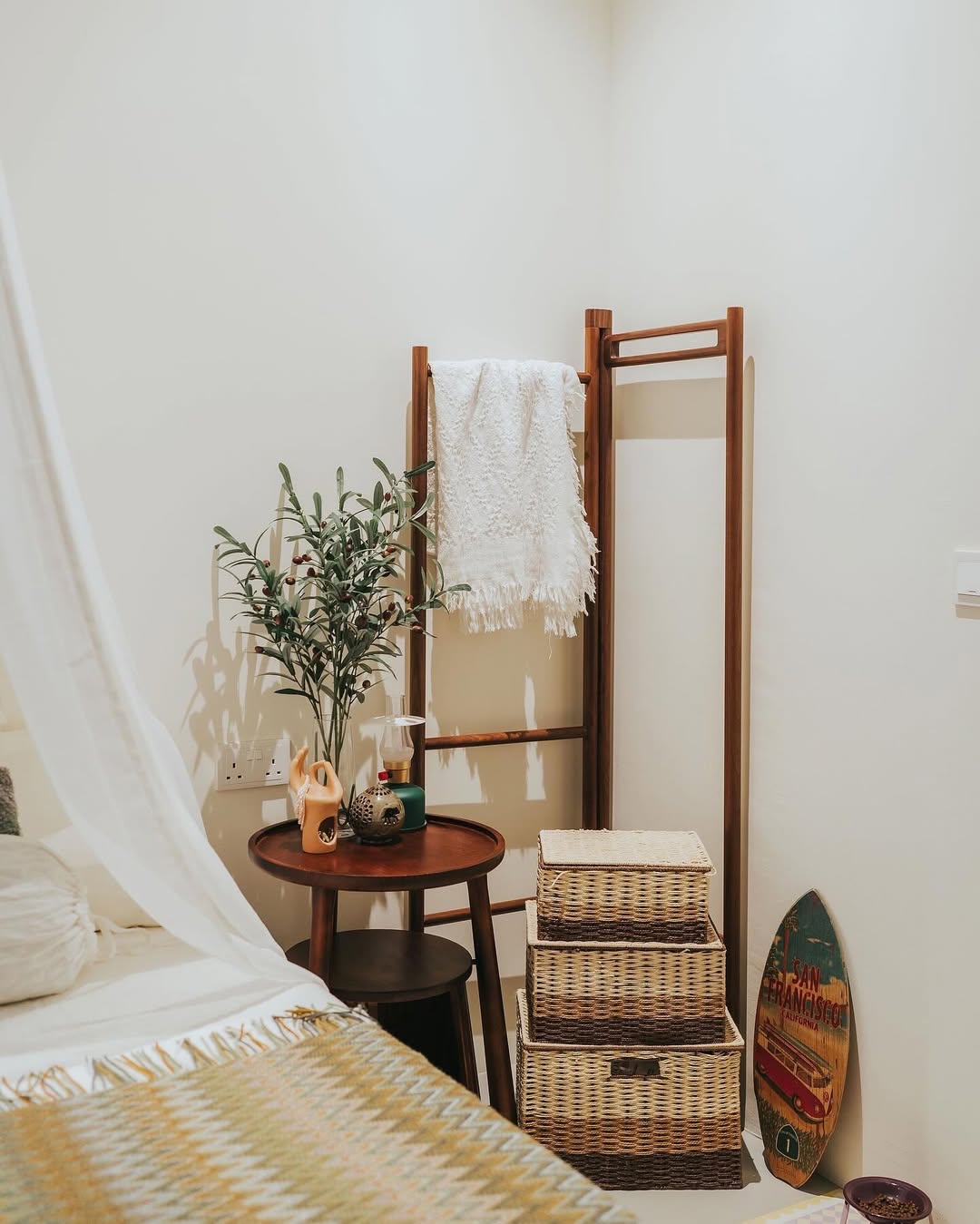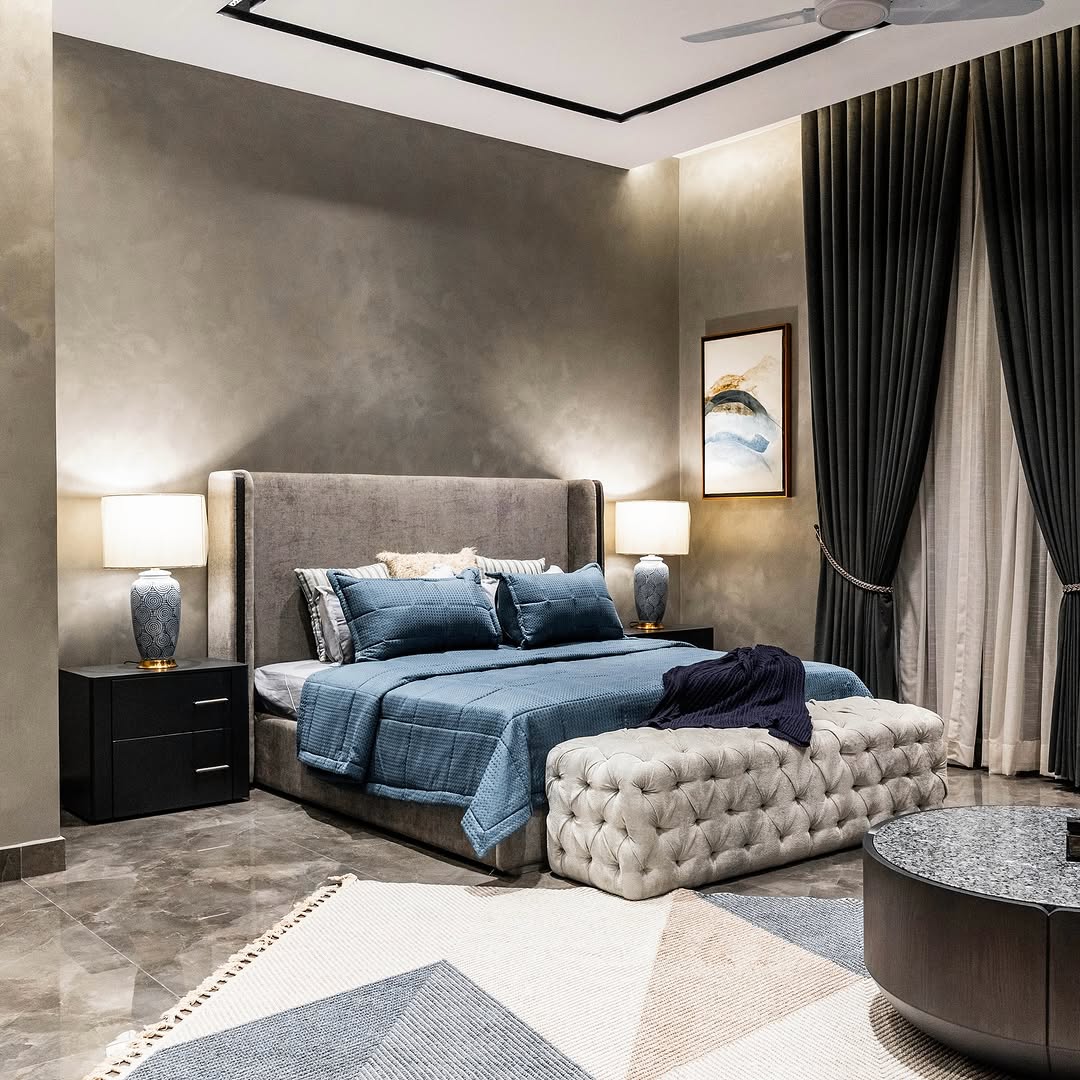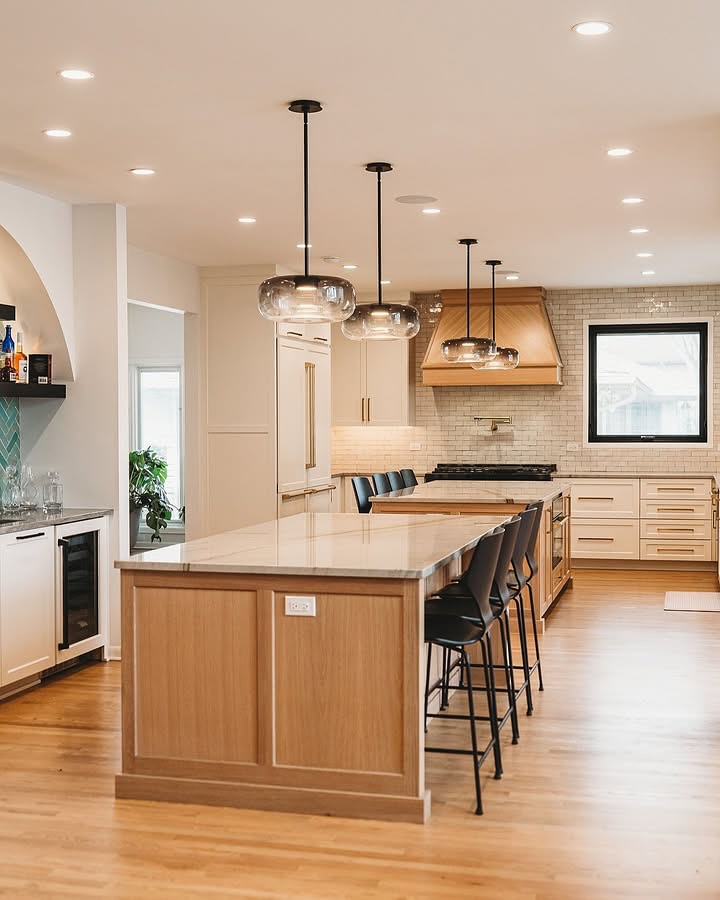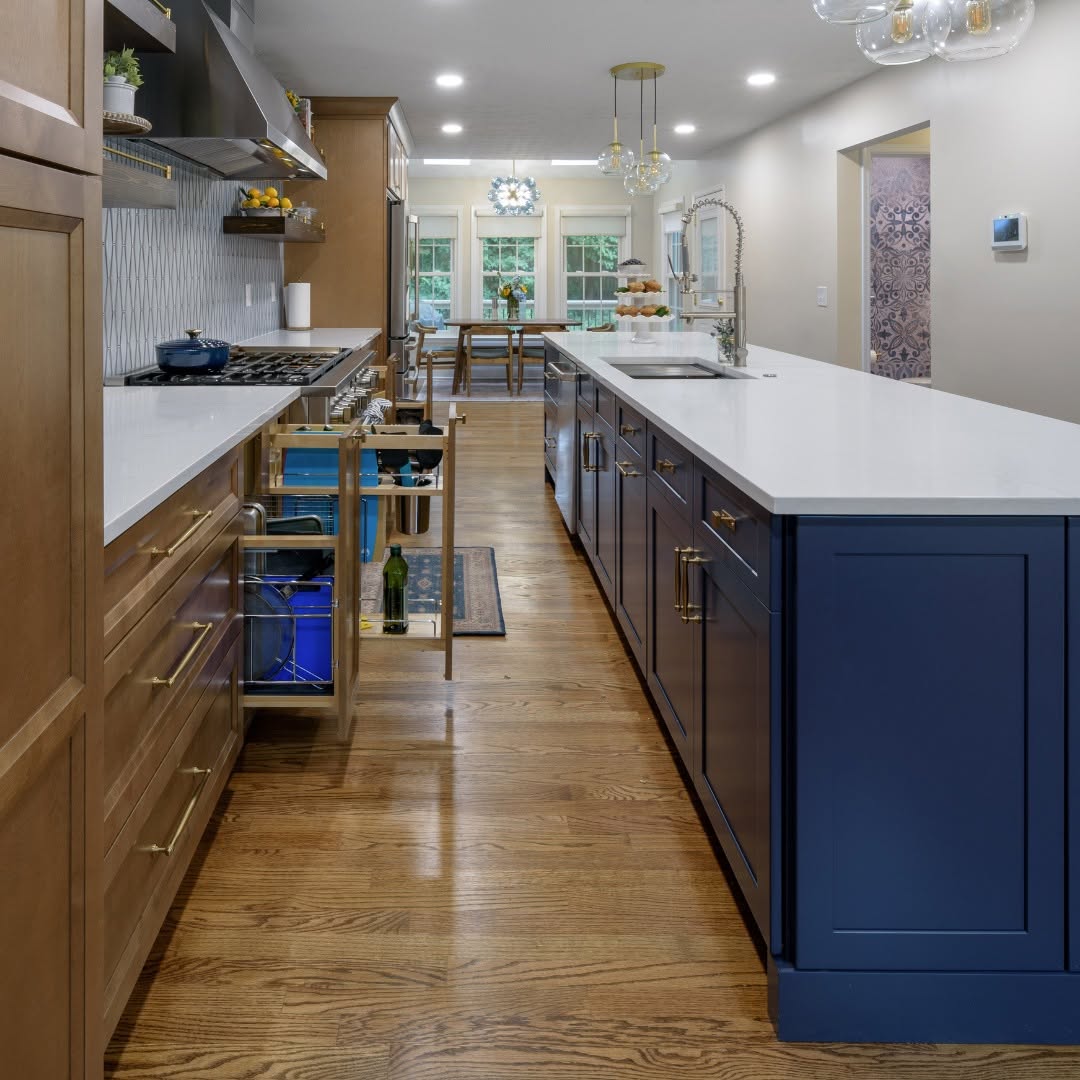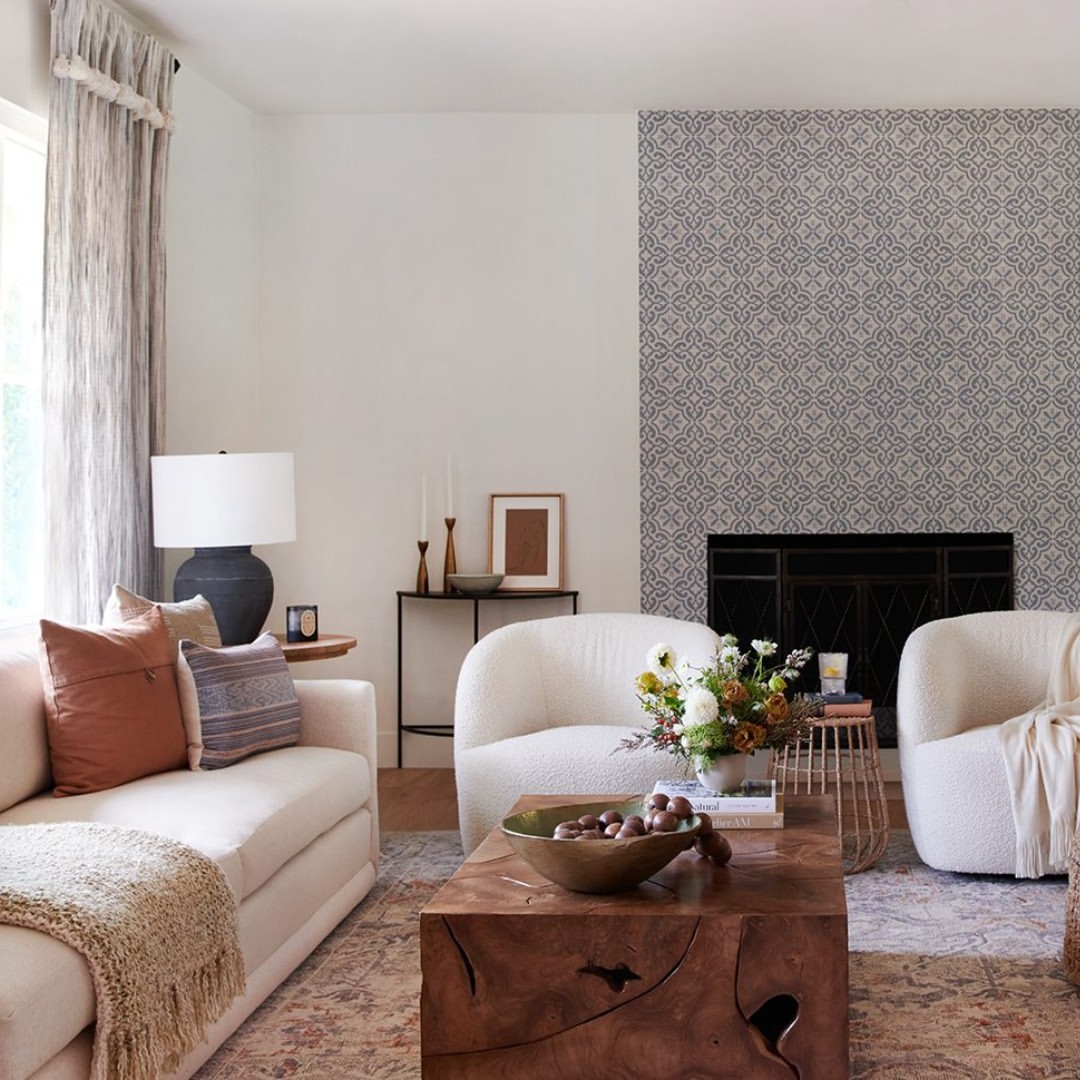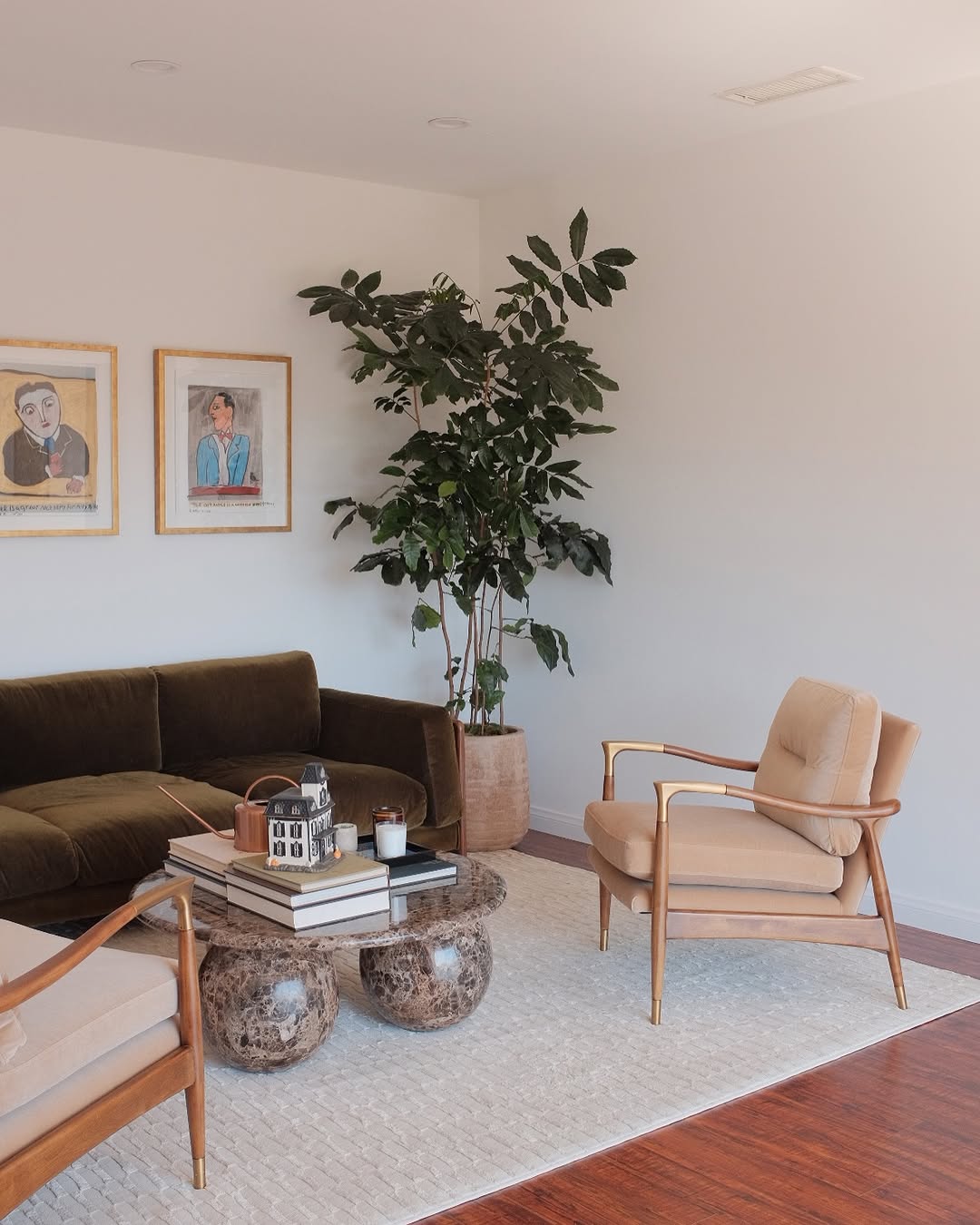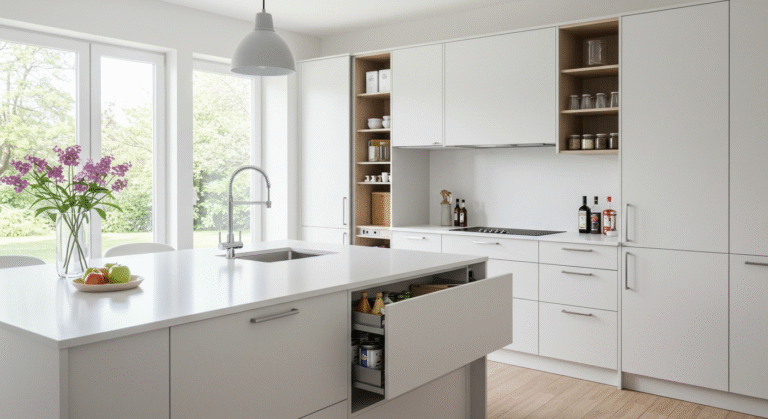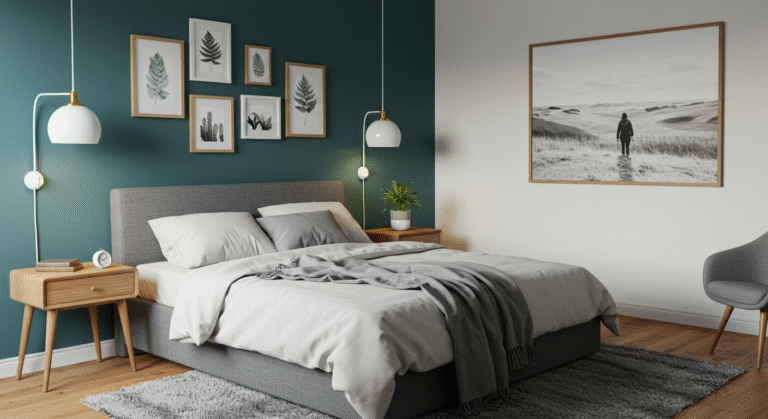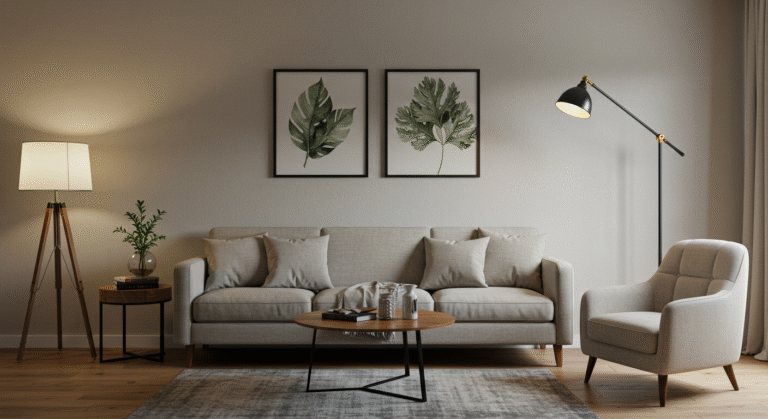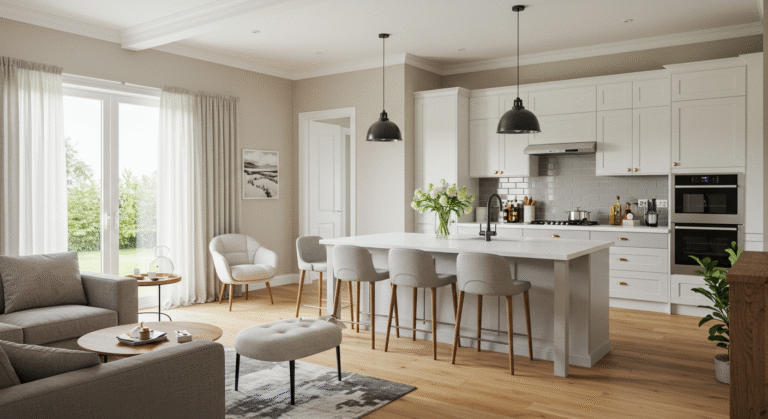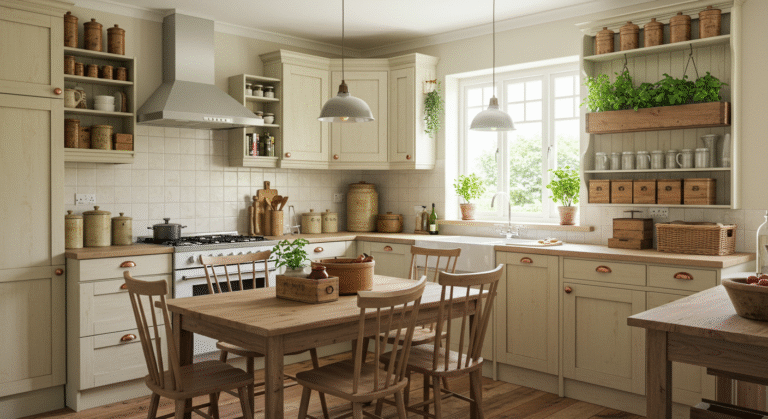20 Minimalist Home Decor Ideas for a Clean, Modern Look
“You want to stick to the essentials, so whatever you don’t need in a space, remove it,” says Jung Lee, event planner and founder of Jung Lee NY. This philosophy is at the heart of minimalist decor, a design approach that is gaining popularity for its clean, modern aesthetic.
Minimalism isn’t about living with nothing; it’s about being intentional with what you keep in your space. By focusing on simplicity, functionality, and thoughtful curation, you can create a sense of calm and reduce visual stress in your daily life.
As we explore the world of minimalist home decor, you’ll discover 20 practical ideas to achieve a modern look without sacrificing comfort or personality. Whether you live in a small apartment or a spacious house, these ideas will help you create a clean and serene environment.
Key Takeaways
- Understand the principles of minimalist decor
- Learn how to create a sense of calm in your space
- Discover 20 practical ideas for a modern look
- Find out how minimalism can work in homes of all sizes
- Understand how to adapt minimalism to your personal style
The Philosophy Behind Minimalist Home Decor
At its core, minimalist home decor embodies a simple yet profound philosophy that prioritizes functionality and serenity. The minimalist design movement has its roots in the early 20th century, particularly in the Bauhaus movement, which emphasized form and materiality.
The “less is more” approach is central to minimalist interior design, focusing on quality over quantity and encouraging thoughtful consumption. This style has evolved to balance simplicity with comfort, creating a livable and warm home.
Read Also: Wall Decor
The “Less is More” Approach
This approach is not just about reducing clutter but also about creating a space that is both functional and aesthetically pleasing. By focusing on essential elements, minimalist design achieves a sense of balance and harmony.
Finding Balance Between Simplicity and Comfort
Achieving balance is key to successful minimalist spaces. It’s about removing excess without creating sterile environments. This minimalism extends beyond aesthetics, influencing lifestyle choices and promoting mindful living.
Embrace a Calming Color Palette
Minimalist design often begins with a carefully considered color palette that promotes serenity. A well-considered palette is not just about aesthetics; it’s about creating a sense of calm and visual harmony.
According to designer Katie Harbison, “A well-considered and restrained palette is essential in minimalist design.” The modern approach to minimalism has evolved to incorporate warm and inviting colors rather than stark whites.
Working with Neutrals
Selecting a base neutral color for walls is crucial as it serves as a versatile backdrop for furniture and accessories. Neutrals like soft grays, creams, and whites are popular choices for achieving a clean and modern look.
Creating Depth with Tonal Variations
To add depth without cluttering the space, one can utilize tonal variations within a limited color palette. This approach allows for visual interest through subtle differences in shading rather than high contrast, maintaining the minimalist decor style.
By carefully choosing a color palette and applying principles like tonal variations, one can achieve a serene and stylish interior design that embodies the essence of minimalism.
Maximize Natural Light
Natural light plays a significant role in creating a sense of openness in minimalist living spaces. To achieve this, it’s essential to maximize natural light in your interior design.
One effective way to do this is through
Window Treatment Strategies
Using sheer curtains or minimal blinds can help maximize light flow while maintaining privacy. For instance, Louis Duncan-He Designs paired bright white walls with matching curtains that allow light from a wall of windows to pour into a pared-down space.
Mirror Placement for Light Amplification
By placing mirrors strategically, you can amplify natural light and create the illusion of more space, making your room feel more airy and inviting.
By implementing these strategies, you can enhance the overall room feel and create a more pleasant living environment.
Focus on Clean Lines and Functional Design
To achieve a minimalist look, it’s essential to focus on clean lines and functional design. This approach ensures a visually simple and purposeful space.
Furniture Selection Tips
When selecting furniture, choose pieces with streamlined silhouettes that serve clear functions. Opt for Scandi-style and midcentury modern pieces for a timeless look. These styles often feature clean lines and minimal ornamentation, making them ideal for a minimalist space.
To add visual interest, balance straight lines with gentle curves. This contrast creates a sense of balance that feels comfortable and lived-in. For instance, a curved sofa can be paired with a straight-lined coffee table to achieve this balance.
Avoiding Visual Clutter
Avoiding visual clutter is crucial in minimalist design. To achieve this, use multifunctional furniture that reduces the number of pieces needed in a space while maximizing utility. Thoughtful furniture placement and negative space can also help avoid clutter.
- Choose furniture with simple, unadorned designs.
- Use negative space to create a sense of breathing room.
- Invest in quality over quantity when it comes to furniture for your interior design.
Curate Your Accessories
The key to a beautiful minimalist space lies in the thoughtful selection of a few, meaningful decor pieces. In minimalist spaces, it’s essential to strike a balance between simplicity and personality.
When it comes to styling your coffee table, consider it a focal point opportunity. As Bailie suggests, “Use your coffee table as a focal point,” and decorate it with a tidy stack of your favorite museum books, a minimal floral arrangement or orchid in a beautiful artisan vase, and any object of meaning. This approach adds a graphic element and texture to your space.
The Rule of Odd Numbers
“A grouping of odd numbers works best,” according to Bailie. This principle can be applied to various decor arrangements, making them more visually appealing. For instance, grouping three or five pieces together creates a more harmonious display than even numbers.
Creating Meaningful Displays
To create a meaningful display, focus on items that tell a story or bring joy. Rotate your accessories seasonally to keep your space feeling fresh without accumulating excess items. By emphasizing quality over quantity and selecting decorative elements carefully, you can achieve a beautiful, minimalist aesthetic.
Incorporate Natural Elements and Textures
To avoid a cold, sterile feel, it’s essential to integrate natural materials and varied textures into your minimalist design. This approach not only adds warmth but also creates a visually interesting space.
Organic Materials for Warmth
Incorporating organic materials like wood, stone, jute, and linen can significantly enhance the warmth and coziness of yourhome. For instance, jute rugs, plaster walls, and rich woods can mix and match beautifully, creating a space that’s both calming and comfortable to live in.
| Material | Texture | Application |
|---|---|---|
| Wood | Rich, warm | Furniture, accents |
| Jute | Rough, natural | Rugs, wall hangings |
| Linen | Soft, breathable | Window treatments, upholstery |
Mixing Textures for Depth
Mixing different textures is key to adding depth to your minimalist interior without creating visual chaos. Layering textures, from linen window treatments to nubby sofas, can create a rich and inviting atmosphere. By incorporating various textures and natural materials, you can achieve a space that feels both modern and warm, perfect for a contemporary home.
Create Intentional Focal Points
Minimalist spaces often rely on intentional focal points to guide the eye. A focal point can be a statement art piece or an architectural feature that draws attention and creates visual hierarchy in a room.
Statement Art Pieces
Statement art pieces can anchor a room without overwhelming it. When selecting art, consider the wall space and how the piece interacts with other elements in the room.
Architectural Features
Highlighting original architectural features, such as a fireplace or built-in shelves, can create a natural focal point. For instance, painting a brick fireplace black can make it a striking element in the room.
By creating intentional focal points, you can add depth and character to a minimalist space, making it more visually appealing and preventing it from feeling bland or directionless.
Minimalist Home Decor Ideas for the Living Room
To achieve a minimalist living room, it’s essential to strike a balance between form and function. A spacious living room can be both beautiful and functional with the right furniture and decor.
One key element is a streamlined seating arrangement that prioritizes conversation and comfort. A large L-shaped sofa can be an excellent anchor piece, providing a comfortable seating area while maintaining visual simplicity.
Streamlined Seating Arrangements
When choosing a sofa, consider its size and shape in relation to the room. A well-proportioned sofa can create a sense of harmony in the space.
Coffee Table Styling
Coffee table styling is also crucial in a minimalist living room. A simple, low-profile coffee table can add functionality without cluttering the space. Here are some styling tips:
- Keep the surface clear and clutter-free
- Use a few, carefully chosen decorative items
- Add some greenery, like a small potted plant
| Element | Minimalist Approach | Traditional Approach |
|---|---|---|
| Furniture | Simple, clean lines | Ornate, complex designs |
| Coffee Table | Low-profile, minimal decor | Ornate, cluttered |
| Seating | Streamlined, L-shaped sofa | Multiple, mismatched pieces |
By incorporating these elements, you can create a minimalist living room that is both beautiful and functional.
Transform Your Bedroom into a Minimalist Sanctuary
The bedroom, a space for relaxation, greatly benefits from minimalist principles, creating a restful sanctuary free from visual distractions. By embracing simplicity, you can craft a clean, comfortable sleep space that sets the right tone for your day.
Bedding and Textile Choices
Choose bedding and textiles that add comfort and texture while maintaining a simple aesthetic. Natural materials like cotton and linen can enhance the calming ambiance of your bedroom.
Nightstand Essentials Only
Keep your nightstand clutter-free by only keeping essential items within reach. This not only enhances the visual appeal but also promotes a peaceful atmosphere.
By incorporating these minimalist ideas, you can create a serene home environment that promotes relaxation and rejuvenation.
Minimalist Kitchen Design Principles
When it comes to designing a minimalist kitchen, several key principles can help achieve a clean and functional space. A well-designed kitchen is not just about aesthetics; it’s also about creating an efficient workspace.
Two crucial elements in minimalist kitchen design are the choice between open shelving and upper cabinets, and effective countertop organization.
Open Shelving vs. Upper Cabinets
Open shelving can create a sense of openness, making the kitchen feel larger. However, it requires meticulous organization to avoid clutter. On the other hand, upper cabinets provide ample storage but can make the space feel closed off if not designed carefully.
Countertop Organization
Countertop organization is vital in maintaining clean lines in a minimalist kitchen. By keeping essential items accessible and hiding appliances or less frequently used items, you can achieve a clutter-free countertop.
For instance, incorporating sleek cabinets and choosing materials like marble or quartz for countertops can enhance the interior design while optimizing space.
Bathroom Simplicity and Elegance
A well-designed minimalist bathroom can be a haven of relaxation and style. By embracing simplicity, we can create a spa-like retreat that not only looks great but also provides a serene environment for personal care.
Statement Fixtures
Statement fixtures can serve as focal points in minimalist bathrooms. For instance, a freestanding tub can be a stunning centerpiece, adding both style and functionality. Distinctive faucets and other fixtures can also contribute to the overall aesthetic, adding a touch of elegance to the space.
Streamlined Storage Solutions
Streamlined storage is crucial in maintaining the minimalist look. By keeping toiletries and linens organized and out of sight, we can maintain a clean and clutter-free environment. This can be achieved through clever use of cabinets, shelves, and other storage solutions.
| Material | Characteristics | Benefits |
|---|---|---|
| Large-format Tiles | Simple, clean lines | Easy to clean, visually expansive |
| Natural Stone | Unique textures, elegant | Durable, adds warmth |
| Wood | Warmth, organic feel | Adds coziness, versatile |
By incorporating materials like large-format tiles, natural stone, and wood, we can add depth and texture to the bathroom without compromising the minimalist decor. Lighting choices also play a significant role in enhancing the sense of simplicity and elegance. For example, sconce lights can add warmth to walls with textured finishes.
In conclusion, creating a minimalist bathroom involves careful selection of fixtures, storage solutions, and materials. By focusing on simplicity and elegance, we can create a bathroom that is not only beautiful but also functional and relaxing.
Smart Storage Solutions for Minimalist Spaces
Effective storage is the backbone of a well-designed minimalist space, allowing for a clean and serene atmosphere. By incorporating smart storage solutions, you can maintain a clutter-free environment that highlights your carefully chosen pieces.
Hidden Storage Opportunities
Utilizing hidden storage opportunities is key to maintaining clean lines in a minimalist space. Consider multipurpose furniture with built-in storage, such as ottomans or coffee tables with storage compartments. This approach helps keep necessary items out of sight, preserving the visual simplicity of your living room or other areas.
Multipurpose Furniture
Multipurpose furniture is a practical idea for enhancing storage without cluttering the space. For instance, a storage bed in the bedroom or a kitchen island with storage can significantly enhance your interior design by combining functionality with aesthetics. By choosing such pieces, you can achieve a more organized and visually appealing room.
By thoughtfully integrating storage into your design, you can enjoy a more streamlined and peaceful living environment.
The Art of Negative Space
Negative space, a key element in minimalism, allows objects to be truly appreciated. By incorporating intentional emptiness, you can create a visually appealing space that feels calm and serene.
One of the primary benefits of negative space is that it creates breathing room within your decor. This can be achieved by leaving sufficient space around statement pieces, such as wall decor or unique furniture, allowing them to shine.
Creating Breathing Room
To effectively create breathing room, consider the scale of your furniture and decor in relation to the size of your space. In smaller rooms, it’s essential to strike a balance between filled and empty areas to avoid clutter.
A well-designed space with adequate negative space can make a room feel more spacious and relaxed. For instance, leaving some areas of your walls empty can create a sense of visual rest, making your space feel more calming.
Balancing Empty and Filled Areas
Achieving a balance between empty and filled areas is crucial for a harmonious interior design. A simple way to accomplish this is by using a balance scale in your mind, weighing the amount of clutter against the empty space.
| Space Element | Filled Areas | Empty Areas |
|---|---|---|
| Living Room | Furniture, decor | Open floor space, wall space |
| Bedroom | Bed, nightstands | Wall space, floor space around bed |
By understanding the importance of negative space and how to balance it with filled areas, you can create a minimalist interior design that is both aesthetically pleasing and functional.
“The absence of clutter can be just as beautiful as the presence of beautiful things.”
As you design your space, keep in mind that cultural differences can influence your approach to negative space. For example, some cultures prefer more cluttered spaces, while others value openness.
Minimalist Wall Decor Approaches
Minimalist wall decor approaches prioritize clean lines and minimal clutter. This approach to decorating walls is characterized by restraint and intentionality, creating a visually calming environment.
Alternatives to Traditional Gallery Walls
Traditional gallery walls can be overwhelming in a minimalist space. Instead, consider alternatives that maintain visual simplicity while showcasing meaningful art and photographs. For instance, a large-scale statement piece of art or a clean vertical row of frames with curated personal images can create a striking focal point.
Jenon Bailie, merchandising and design director at Room & Board, suggests balancing your space with such statement pieces, allowing for “a little breathing room, design-wise.”
Utilizing Floating Shelves and Display Ledges
Floating shelves and display ledges offer a flexible way to display decorative items without cluttering your walls. They can be used to create evolving wall displays that add depth and interest to your space.
| Decor Approach | Description | Benefits |
|---|---|---|
| Large-scale Art | A single, impactful piece | Creates a focal point, adds visual interest |
| Vertical Frame Arrangement | A series of frames in a vertical line | Creates a sense of height, adds visual simplicity |
| Floating Shelves | Shelves mounted without visible brackets | Flexible display, adds depth |
By incorporating these minimalist wall decor approaches, you can create a clean and modern look that emphasizes your favorite art pieces and decorative elements.
Incorporating Plants in a Minimalist Setting
Plants can be a wonderful addition to a minimalist room, providing a subtle pop of color and texture. By carefully selecting and placing greenery, you can enhance the clean aesthetic of your space.
Choosing the Right Plants
For a minimalist setting, it’s best to choose plants with strong, architectural forms. These varieties tend to have clean lines and simple shapes that fit well with the minimalist interior design. Some examples include succulents and plants with large, statement leaves.
Strategic Placement
Strategic placement is crucial when incorporating plants into a minimalist home. You can use plants as focal points or subtle accents. For instance, a large plant can be placed in a corner to create a striking visual element, while smaller plants can be used to add a touch of greenery to a living room or other areas.
| Plant Type | Placement Idea | Benefits |
|---|---|---|
| Succulents | Coffee table or shelf | Adds texture and subtle color |
| Large-leaf plants | Corner or floor | Creates a focal point |
| Small potted plants | Windowsill or side table | Brings in natural beauty |
By incorporating plants into your minimalist space, you can create a more welcoming and color-enhanced room without disrupting its clean aesthetic. This approach can also help in creating a sense of connection to nature, enhancing overall wellbeing.
Conclusion:
As we conclude our exploration of minimalist home decor, it’s clear that simplicity is not just about aesthetics, but a way of living. By embracing minimalist design principles, we can create spaces that are not only visually appealing but also promote a sense of calm and serenity.
The key to successful minimalist decor lies in intentionality and thoughtful curation. This involves carefully selecting each element, from furniture to accessories, to ensure they contribute to the overall harmony of the space. By doing so, we can create a home that feels both modern and inviting.
By implementing these design ideas, you can enjoy the benefits of minimalism, including reduced stress and easier maintenance. Start with small changes and gradually work your way towards a more streamlined and peaceful room that reflects your personal style.

